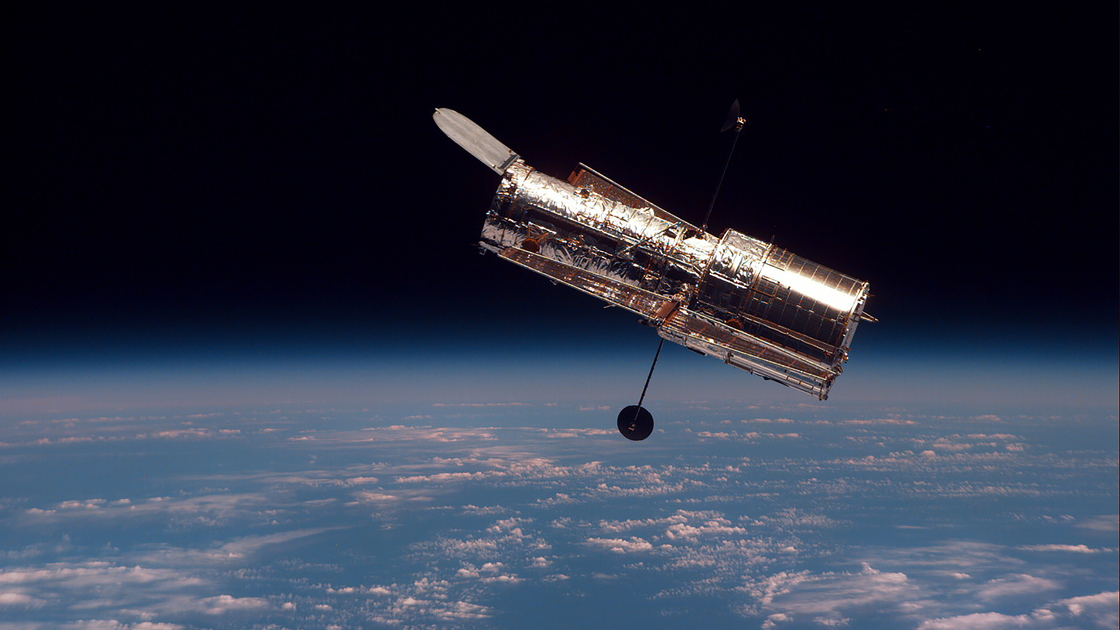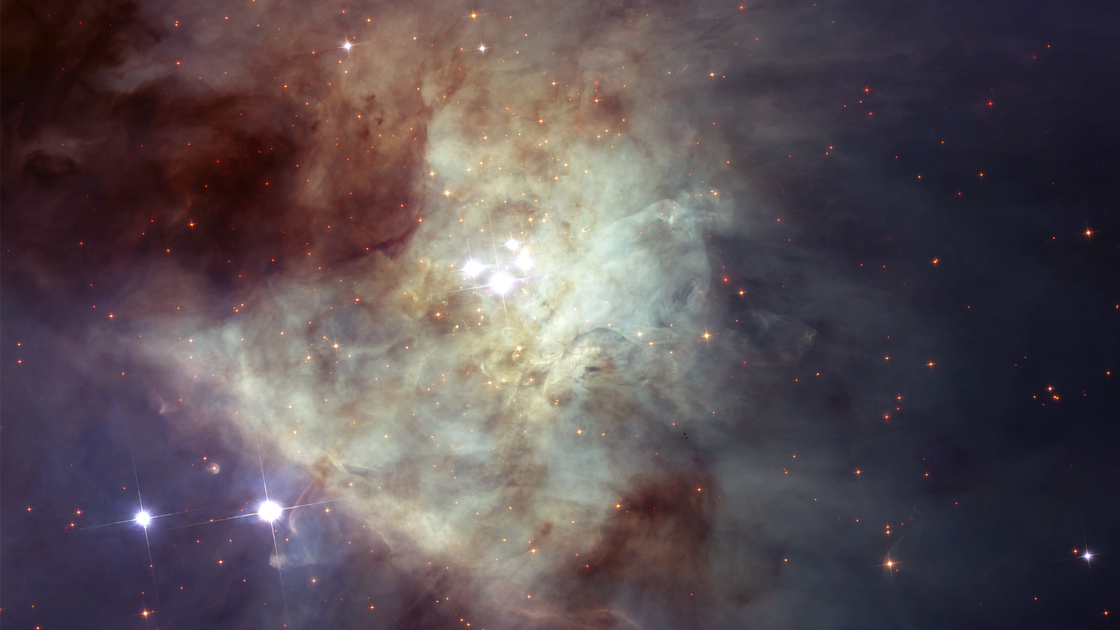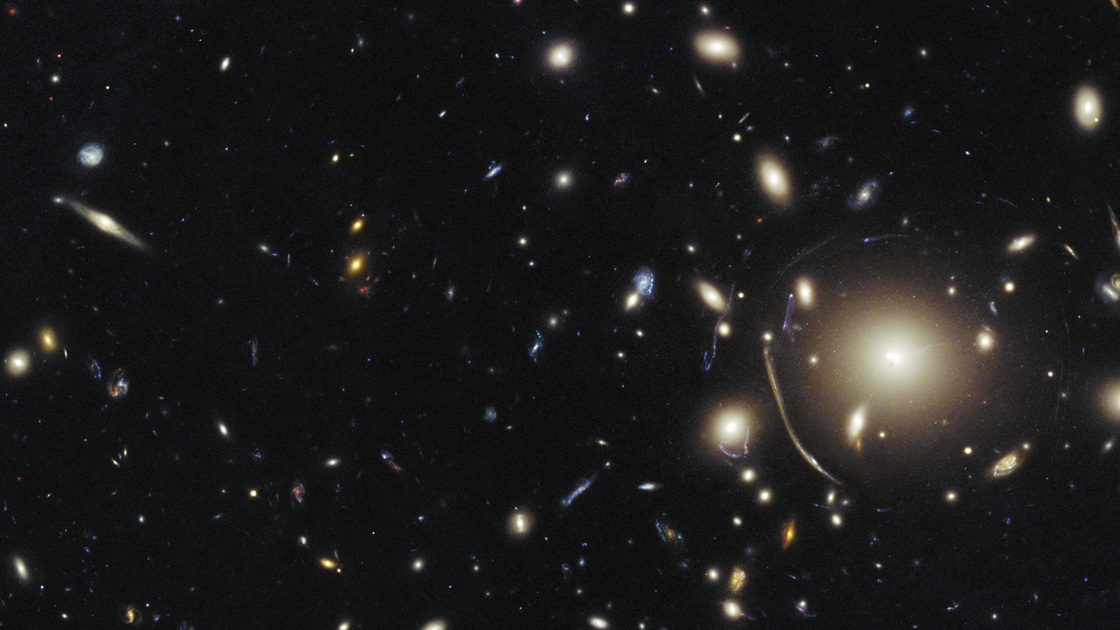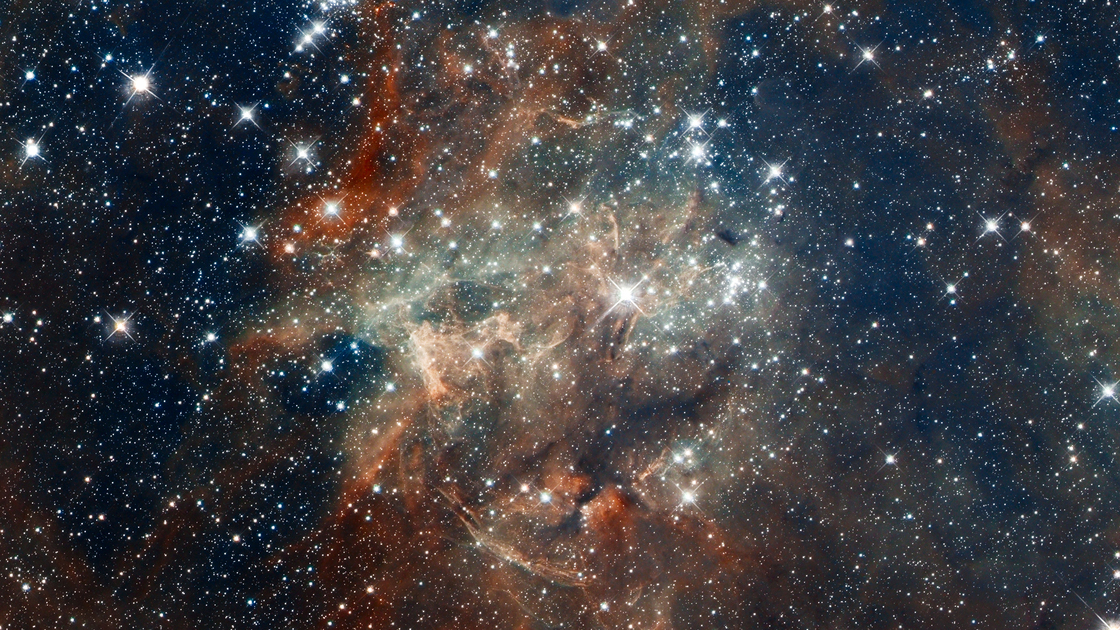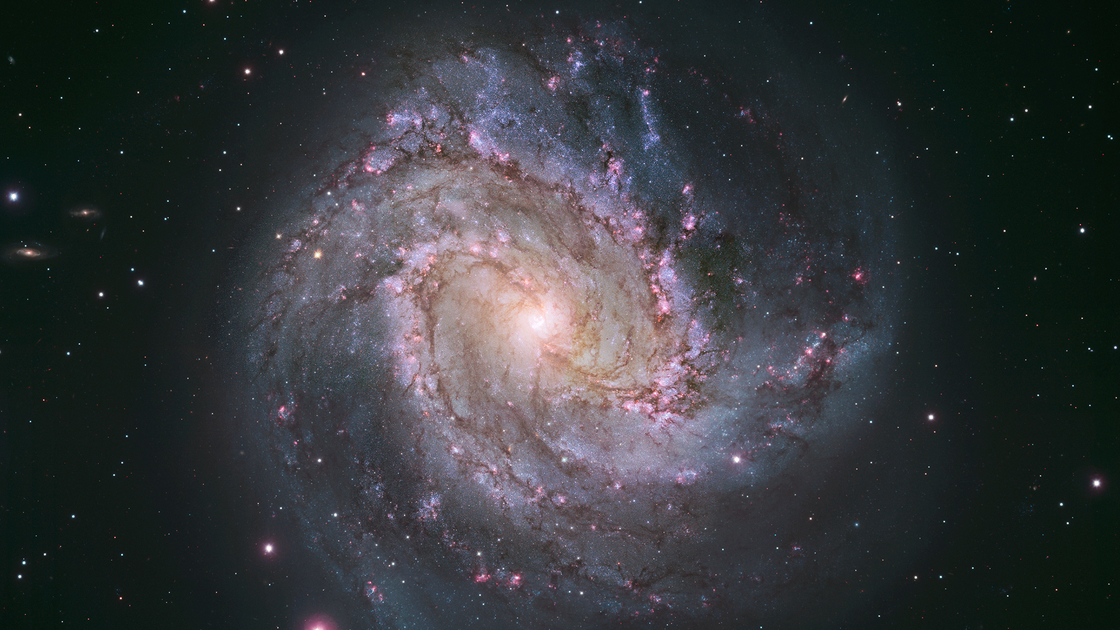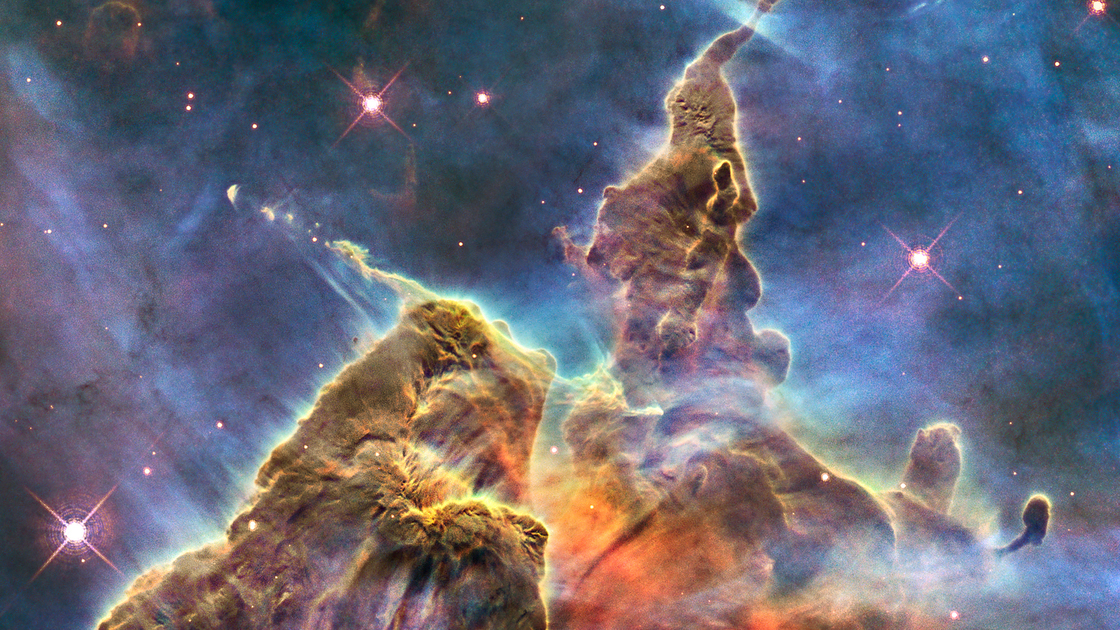For the longest time, even with the most high-powered telescopes, we couldn’t see that far into outer space. Scientists wanted to study the universe in-depth, but Earth’s atmosphere made space too hazy for any major progress.
All that changed 28 years ago with the greatest technological development of the 20th century. On April 24, 1990, the Hubble Space Telescope was launched into space on Space Shuttle Discovery.
The idea for Hubble originated in the 1920s with an American scientist by that surname, but the project wasn’t given approval until 1969. In 1975, the European Space Agency and the National Aeronautics and Space Administration (nasa) began to work out the building plans, and in 1977, the United States’ Congress approved funding for the project. This project took longer to complete than it did for the United States to set foot on the moon—that’s how massive this undertaking was.
When Hubble was finally launched, there was a problem with one of its mirrors, which caused the $1.5 billion telescope to return fuzzy pictures. They had no choice but to try to repair it. It took nasa three years to put together a repair mission, and when they finally fixed Hubble in December 1993, the telescope began to send back breathtaking images—and it has ever since. There have been four repair missions since that first major one to ensure that the telescope continues to work properly. The last major one was in 2009, but the telescope should last several more years, even after the new James Webb Space Telescope is launched in 2020 to replace it.
In 2015, in honor of the 25th anniversary of the launch of Hubble, Nova produced a documentary titled Invisible Universe Revealed. This is what that documentary said about the telescope: “The Hubble Space Telescope is probably the most scientifically productive instrument in history. This single tool, the Hubble Space Telescope, has revealed the size and age of the universe, the birthplace of stars and the existence of black holes. It’s helped us find planets like our own in far-off solar systems and a mysterious force, ‘dark energy,’ that makes up about 70 percent of the universe. The Hubble Space Telescope has completely changed the way that we, as scientists, understand the universe.”
Space.com has this to say about the telescope: “Hubble’s elevated perspective and advanced optics allow it to peer farther away than previous ground-based optics are able to see. Because light takes time to travel long distances, the range of the [Hubble Space Telescope] makes it function similar to a time machine; the light it views from remote objects only reveals how that object appeared when the light left it, not how it appears today. Thus, when we look at the Andromeda galaxy, 2.5 million light-years from Earth, we see it as it was 2.5 million years ago.”
Sometimes it’s easy to pick on the scientists a little bit. They have produced a lot of theories and predictions that are not right. At the same time, they have also achieved great advancements in technology—like the Hubble Space Telescope. This is the exact paradox that Herbert W. Armstrong talked about: the fact that we have all of this technological development and so little understanding. Nevertheless, Hubble has changed the way scientists look at the universe.
“Since the dawn of humanity,” continues the Nova documentary, “we’ve looked to the heavens and wondered, ‘How old is the universe?’ ‘How many stars are there in the sky?’ ‘Are there other planets out there like our own?’ But in the last 25 years, there’s been a revolution, all because of a machine called Hubble. Traveling in space, high above the distortions of our atmosphere, gives this giant telescope great power.”
There is great power in this telescope. It orbits the Earth at 340 miles above its surface, and it travels at 17,500 miles per hour. It circles the Earth once every 97 minutes. But how much greater is the power that brought the universe into existence? There’s been a revolution over the past 25 years, thanks to this technology. But has it brought us closer to God, our Creator and Maker? You don’t hear anything about Him in this documentary. It’s a fascinating video in many respects, but they don’t acknowledge God. Romans 1:20 says that the creation around us reveals God, and the technology scientists have produced to reveal the invisible universe is making it more and more obvious. Yet, as verse 21 says, these scientists don’t acknowledge God, and they certainly aren’t thankful to Him.
Hubble has changed the way scientists think about the universe in a lot of ways, but not nearly as much as it should.
“Hubble has shown us that black holes are real. A giant one sits at the center of our galaxy and nearly every other we know. It’s discovered the age of the universe and that there are more stars in the heavens than grains of sand on all the beaches and deserts of the world, combined.”
That’s the size and scope of the universe that we can look up into at night, and it should cause us to ask some questions. Psalm 8:3-4 say, “When I consider thy heavens, the work of thy fingers, the moon and the stars, which thou hast ordained; What is man, that thou art mindful of him? and the son of man, that thou visitest him?” These are the things we should be considering most of all. Why did God make the universe? Why are there so many galaxies? Why are there hundreds of billions of stars? These are the questions scientists should be asking.
Hubble really did open up our eyes in many ways. The Nova documentary has interviews of people who were there the night when the first clear pictures started to come in, and they describe just how unforgettable it was. Ed Weiler, a member of the nasa Science Mission Directorate at the time, said: “I’ll never forget it. I mean I’ll remember the birth of my two kids, and the night we saw the first image from Hubble. We were all huddled around the screen, and I will never forget when that screen lit up, and first appeared a little dot in the center. And that by itself was good news, because there was no fuzz around it. But then, more and more little dots, stars, started showing up, until the whole screen was filled with crystal clear points of light, and all the faint stuff we were never seeing suddenly showed up.”
That was in December of 1993. Since then, scientists have discovered absolutely amazing things about our universe. The documentary continues: “So in a point in the sky no bigger than a drinking straw, there are 10,000 galaxies. So it told us, instantly, there were 200 billion galaxies in the observable universe. Each galaxy has roughly 100 billion stars. You do the math, and it tells us how many stars there are in our observable universe: It’s 2 with 22 zeros after it. We didn’t know that before the Hubble Space Telescope went up.”
Now we do know. But the scientists still never ask where it all came from or how it was brought into existence. They don’t bring God into the picture. This is a revolution that God is not part of. They reference the big bang time and again. According to them, the universe just exploded into existence without any higher power or intelligent being bringing it into existence. They make an incredible telescope so that they can observe God’s creation—all of God’s handiwork—and then they won’t even acknowledge God.
In E = MC2, a biography about Albert Einstein, author David Bodanis writes, “We’re used to science being separated from religion, but in the 17th and 18th centuries it wasn’t.” In the Nova documentary from 2015, science is definitely separated from religion. But in the 17th and 18th centuries, it wasn’t. Sir Isaac Newton believed in God. He wrote papers about God and his religious beliefs. He believed that God created the universe. He endorsed a very literal interpretation of the Bible—and he was a famous scientist!
Michael Faraday was an English scientist from the early 1800s who specialized in electromagnetism and electrochemistry. He was one of the most influential scientists in history. He invented the bases for the electric engine—and he was a deeply religious man who regularly turned to the Bible for inspiration.
James Clerk Maxwell was a Scottish mathematician, and he was deeply religious as well. These famous scientists of old were motivated to study and research by a desire to understand the God behind the universe! These were carnal-minded scholars who didn’t understand God’s truth, but at least they accepted that God was Creator. At least they acknowledged that the material universe is God’s creation. At least they acknowledged that the heavens declare God’s glory, as Psalm 19:1 says. What a difference when you compare them to scientists today.
This is how the Nova documentary ends: “The human desire is to find out who we are. Are we alone? Where did we come from? How did we get here? These questions probably will outlive all of us. But I think Hubble has been very important in making progress toward these answers.”
These are the right questions, but has Hubble really helped to answer them? Why are we here? Where did we come from? How did we get here in the first place? What is our potential? Is there life after death? What is God doing? Who and what is God?
In Our Awesome Universe Potential, Joel Hilliker writes, “[Hubble has] made more than 100,000 trips around our planet, covering 2.5 billion miles. … From the Hubble, we have seen supernovas, galaxies in their early stages, and massive stars collapsing. We have seen comets striking planets, and births of stars; we can recognize black holes. These images give us spectacular views of our expanding universe. … Hubble makes about 20,000 observations per year. It has recorded more than half a million pictures over the past two decades, which nasa has released to astronomers all over the world to study—and to us, to marvel at. …
“These dazzling images inspire some penetrating questions. Where does it end? Where did it all come from? Is there any meaning behind it all? Why is it here? Why, for that matter, am I here?
“This telescope is the most impressive of an array of tools that are helping us coax the cosmos into revealing its secrets and mysteries. And the more we study, and the more we learn, the stronger the evidence becomes of an absolutely remarkable truth: There is an Author of the cosmos. And He intended for us to be able to study the stars—to help us come to know Him!”
Indeed, there is an Author. God is Creator, Ruler and Educator, but scientists today have rejected His rule. Scholars don’t turn to Him for education. Most people don’t go to the Bible like Sir Isaac Newton, Michael Faraday or James Clerk Maxwell did. Society believes it is too advanced for that.
In 2013, my father, Gerald Flurry, delivered a Key of David program titled “Our Awesome Universe Potential—Part 1.” During his program, he said this about the Hubble Space Telescope:
“So I think God had a hand in the Hubble Telescope, and the scientists will tell you that it just uncovered and revealed all kinds of mysteries and secrets and new information that they had never had before. But there’s something more important than that, something a lot more important than that.
“We need to see our potential in all of this. Why is man on this Earth? Why are we here? What God has for us to see, see with our eyes, ought to just set our imaginations on fire. It is that soul-stirring, it is that wonderful. That cosmos out there is there, if we understand it the way the Bible teaches it, so that we can get to know God. It’s a major way that we get to know God and know about our own future. That’s something we need to look into very carefully.”
You see, God was behind the launch of the Hubble Space Telescope. He had a hand in it. Hubble’s advanced technology has caused a real revolution in our knowledge of the universe around us. But this understanding hasn’t caused the scientists to see God behind the universe. This is not exalting God in their eyes. God is nonexistent to them.
Hubble is really more for you and me than it is for these scientists. God wants us to see. God wants to set our imaginations on fire. God wants us to react to His power and greatness in the same way that those scientists did in 1993 when they were cheering as that first picture came across the screen. That’s what the Hubble Space Telescope can do for you and for me, if we will lift up our eyes. That is why God is behind the Hubble Space Telescope.
In another Key of David program, “Hubble Telescope and the Bible,” Mr. Flurry speaks about what scientists believe is the purpose for Hubble: “They’ll tell you, if you ask them, ‘Well, what is the purpose of the Hubble telescope?’ ‘Well, that’s to discover our origins.’ Well, now, are they really going to find our origins out on Mars? No, Genesis chapters 1 through 3 talk about our origins. So this is fundamental teaching from the Bible, and yet the scientists talk about this all the time, and I rarely—I don’t even recall anybody having ever challenged that. They just simply don’t do it. Now, we certainly should challenge it. …
“Now we have to give the scientists credit for [Hubble]. That’s something to thrill us, and I rejoice in those pictures. I really love them, to watch them and be inspired by them, and yet Christ did make another statement about ‘… their eyes they have closed.’ Now how do you close your eyes? If you’re talking about the Hubble telescope and you don’t ever, it seems to me, mention God or the Bible, then it seems to me that’s when their eyes are closed.”
Scientists have closed their eyes to all of this precious truth. “The heavens declare the glory of God” (Psalm 19:1), and they have closed their eyes to it. There’s a message coming from the heavens. There’s a message coming from those pictures—from the 20,000 observations per year. Those observations declare God’s glorious power and might.
Verse 2 says: “Day to day pours forth speech, and night to night declares knowledge” (Revised Standard Version). It is like the heavens are prophesying. They are declaring God’s message. Now, it’s not audible. Verse 3 says, “There is no speech nor language, where their voice is not heard.” It’s an unspoken message, but it’s coming through loud and clear—if we’ll open and lift up our eyes.
This telescope and many other modern scientific instruments are making it easier to discern that message. On one hand, we can look into the smallest of cell structures under high-power microscopes, and on the other hand, we can view the farthest reaches of the observable universe. And still, the world rejects God and His creative power.
But all of these inventions only prove over and over again that there is a great Creator God behind the universe. Scientists don’t believe it, but the evidence is visible in each of the 1.3 million observations that Hubble has made since its mission began. God had a hand in the Hubble Space Telescope because it helps to reveal Him and His incredible power and might—and our awesome universe potential.
